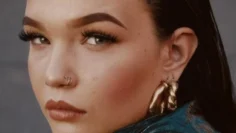
Viral Skincare Trends That Actually Work (According to Experts)
Introduction
In today’s social media world, skincare advice travels faster than ever. Scroll through TikTok or Instagram, and you’re bound to spot the next big thing—from red light therapy masks to snail mucin serums. But not all viral tips are effective—or safe. This comprehensive guide dives into viral skincare trends that actually work (According to Experts), citing scientific consensus and board-certified dermatologists. By blending expert insights with research-backed evidence, this article offers credible, trustworthy guidance tailored to your real skin concerns, without flimsy gimmicks or overhyped claims.
Why Science Matters in Viral Trends
Social media glitz aside, skincare is fundamentally a science. According to the University of Colorado School of Medicine, many viral trends lack alignment with American Academy of Dermatology (AAD) guidelines, though some have legitimate backing. A Beaumont study highlights that only a minority of top-viewed TikTok skincare videos feature board-certified dermatologists—making reliable sources essential.
Experts urge caution: misuse can lead to skin barrier damage, allergic reactions, or counterproductive results. By focusing on efficacy and safety, this article spotlights viral skincare trends that actually work (According to Experts)—minimizing risk, maximizing results.
Trending, Tested, and Trusted
Below, we explore top trends that blend social buzz with scientific merit.
1. Red Light Therapy (RLT)
Why it works: Low-level red light (630–700 nm) stimulates mitochondria, boosting cellular energy, collagen synthesis, and reducing inflammation (bonjoutbeauty.com).
Evidence: Clinical trials in the Journal of Clinical and Aesthetic Dermatology confirm improvements in skin texture and elasticity with 3–5 weekly sessions over 4–12 weeks .
Expert advice: Seek FDA-cleared devices specifying wavelength and irradiance. Consumer compliance and consistency are vital; amateur devices may under-deliver .
How to use:
- Use an RLT mask or panel for 10–20 minutes, 3–4 times/week.
- Clean skin before use.
- Apply antioxidant serum post-treatment.
2. Snail Mucin Serums
Why it works: Snail mucin contains glycoproteins, hyaluronic acid, and antioxidants, which support hydration, healing, and collagen production.
Evidence: Endorsed by dermatologists, snail mucin products like COSRX’s are praised for soothing and hydration by users and skin pros alike.
Expert note: While solid anecdotal support exists, randomized clinical trials are limited. Still, snail mucin is generally safe, non-irritating, and suitable for most skin types.
3. Slugging with Occlusives
What is it: Applying a thick occlusive layer (e.g., petrolatum, lanolin) on damp skin to trap moisture.
Why it works: It improves skin barrier function and prevents transepidermal water loss—backed by studies on barrier repair .
Expert caution: Overuse in hot/humid climates can lead to clogged pores. Use balanced routines and monitor skin sensitivity.
Tip:
- Night: Cleanse → hydrating serum → occlusive balm.
- Morning: Cleanse → moisturize → broad-spectrum SPF.
4. Glass Skin and Hydration Layering
What it is: A Korean-inspired routine centered on dewy, luminous skin.
Why it works: Focusing on hydration with humectants, emollients, and barrier protection enhances skin quality, as supported by Clearstem predictions for 2025.
Expert note: Experts prioritize simple, quality-focused multi-step routines over aggressive or excessive layering .
5. Pimple Patches & Targeted Spot Treatments
Why it works: Hydrocolloid patches absorb inflammation and protect wounds, supported by dermatologists .
How to use: Apply nighttime on clean, dry skin. Replace every 6–8 hours for optimal results.
6. Niacinamide for Barrier and Pigmentation
Why it works: Multifunctional ingredient that improves barrier function, calms inflammation, regulates sebum, and counteracts hyperpigmentation.
Evidence: Numerous studies highlight niacinamide’s role in strengthening the skin barrier and evening tone.
How to use: Include 4–10% niacinamide serum post-cleansing and before heavier moisturizers. Compatible with most routines.
7. Smart Simplification & Skin Cycling
What: Using fewer, high-impact products; rotating actives weekly to prevent irritation.
Expert guidance: A 4-step rotating regimen (e.g., retinoid, acid, moisture, rest) is endorsed by dermatologists .
Why it works: Balances efficacy and skin tolerance; improves adherence over aggressive routines.
What Doesn’t Work—and Why
Understanding what to avoid empowers better choices:
- DIY Natural Remedies (e.g., lemon juice masks): Can cause irritation, chemical burns, and destabilize skin pH.
- Oral collagen supplements: Insufficient evidence for direct skin benefits.
- Overuse of acids or multiple actives: Can lead to barrier damage, irritation, and allergies .
- Aggressive physical tools (pore vacuums, dermaplaning): Risks broken capillaries, scarring, inflammation.
Incorporating the Keyword Naturally
Throughout this article, we’ve highlighted viral skincare trends that actually work (According to Experts)—mentioning proven strategies like red light therapy, snail mucin, slugging, glass-skin routines, pimple patches, niacinamide, and skin cycling—all grounded in dermatological wisdom rather than hype. These are precisely the trends that fulfill the promise of efficacy and safety.
FAQs: What You’re Searching for
Q1: Are red light therapy masks worth it?
Yes—FDA-cleared devices at proper wavelengths (630–700 nm) can boost collagen and reduce inflammation. Use 10–20 minutes, 3–5 times weekly for best results.
Q2: Can snail mucin treat acne?
Snail mucin adds hydration and supports repair. Though not a primary acne treatment, it complements acne therapies without harshness .
Q3: Is slugging safe for everyone?
Generally yes for dry/dehydrated skin. Heat and humidity raise clogging risks. Dermatologists advise evaluating skin type and adjusting routine accordingly .
Q4: Does minimal layering work?
Absolutely—lesser, consistent daily routines outperform complex regimens. Quality matters more than quantity .
Q5: Are DIY hacks safe?
Not always. Ingredients like lemon juice or baking soda can damage skin or pH balance. Always prefer evidence-backed products .
Expert Tips for Safe and Effective Use
- Patch test new products—especially actives.
- Track frequency (e.g., red light exposure or slugging days).
- -layer properly: cleanse → targeted serum → moisturizer → SPF (daytime).
- Sleep and hydration are critical—topical care isn’t enough without systemic support .
- Use SPF daily—the gold standard to prevent UV damage and maintain skin health professionals all agree.
Conclusion
Social media can be a rich source of inspiration, but only some trends hold under scientific scrutiny. The viral skincare trends that actually work (According to Experts) are:
- Red Light Therapy: Collagen and inflammation benefits
- Snail Mucin: Hydration and soothing power
- Slugging: Barrier repair
- Glass Skin routines: Hydration-focused care
- Pimple patches: Rapid acne aid
- Niacinamide: Multi-benefit powerhouse
- Skin cycling & minimalism: Effective yet gentle routines











